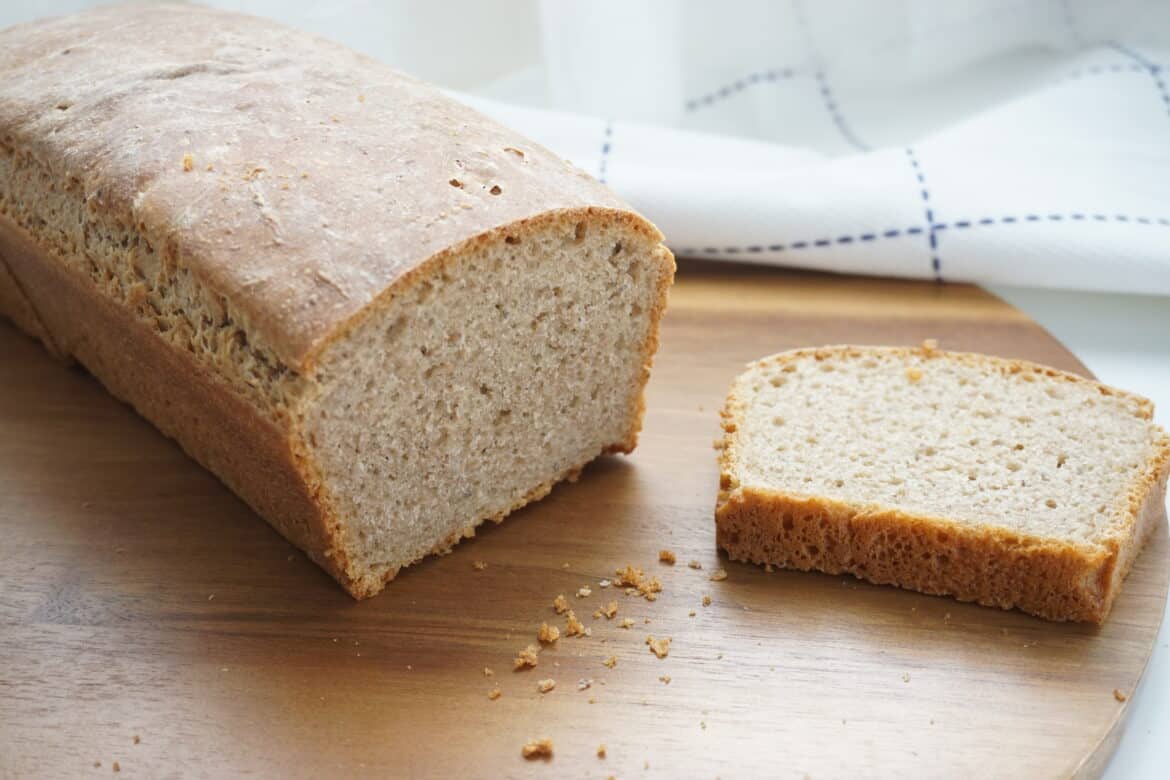There are many ways to make your own sourdough bread and starter. I have been trying out sourdough bread since 2 decades with mixed success. The main key to success is not to give up. Many a times I have discarded a perfectly good sourdough starter due to laziness and being inconsistent with feeding the starter. Home made yeast culture is also tricky and very sensitive which is one reason why many beginners give up with time.
How to make Sourdough bread video
What is a sourdough starter?
A sourdough starter is about producing yeast to make your bread dough rise. Instead of the conventional way to make a ready to use yeast bread, you also make the yeast yourself. There are probably at least 3 ways to start your sourdough starter.
- Using fruits.
- Let the dough get sour by using the natural yeast found in the atmosphere.
- Getting ready starter culture from your health food store.
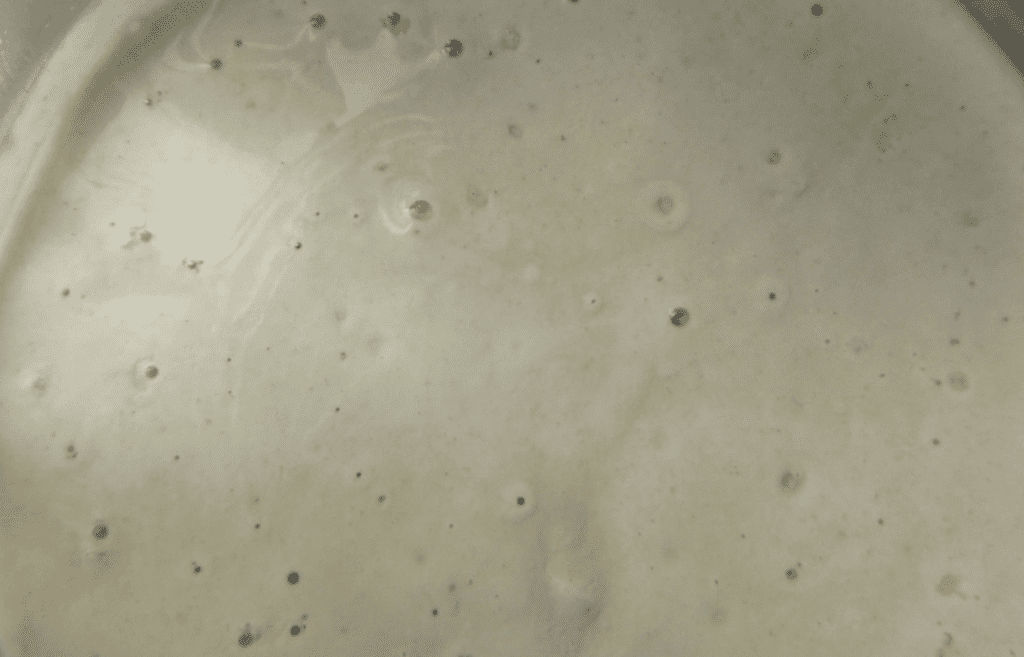
1. Using fruits to start your sourdough starter
Despite watching a BBC baking show from the master baker Paul Hollywood I haven’t tried this method. Its best you click on his link sourdough-starter . This method seems easy enough and he explains very well for beginners to follow.
2. Traditional way to make your own sourdough starter
This will be similar to how I make my Idly batter Idli-recipe. With the Idly recipe the fermentation takes place very quickly within a few hours and I don’t need to feed the dough. Sour dough starter takes longer than an Idli batter. You will have to treat the starter like a plant or a pet which needs a lot of nurturing till they mature. Since the culture is sensitive to temperature variations and season you will need to be more vigilant with the feeding regime for the first week.
Regime for beginning your starter
Day 1
100 gm stone ground rye flour, 150 gm lukewarm water
Mix them in a glass jar and set it aside. Don’t close the lid too tightly. We need to get the yeast from the atmosphere into this starter. Weigh the jar beforehand so you don’t mix up the measurements.
Day 2
70 gm mature starter ( jar weight + 70 gm = what your jar should weigh when the correct amount of starter has been removed)
50 gm stone ground rye flour + 50 gm unbleached all purpose flour and 115 gm lukewarm water
Day 3
Same procedure as in day 2 to be followed.
Day 4
70 gm mature starter, 50 gm stone ground rye flour, 50 gm unbleached all purpose flour and 100 gm lukewarm water
5th Day: Repeat as in day 4
6th Day:
To 50 gm of the mature starter add 50 gm stone ground rye flour along with 50 gm unbleached all purpose flour and 100 g lukewarm water
Final day : This will be your last feeding until it’s ready to be used but it will also be your maintenance feeding. Once your starter is active you will be feeding once every 12-24 hours depending on the season. The easiest choice would be to feed it once a day, every 24 hours.
25 gm mature starter, 50 gm stone ground rye flour, 50 gm unbleached all purpose flour and 100 gm of water at room temperature
3. Get a ready made starter culture
This is what I did last year. I got a rye starter culture from the health food store. You can even get a culture from your friends who already have one and start feeding the dough. Since rye is dense and low in gluten I opted for it, I transformed a little of the rye culture to spelt starter culture after baking a bread with half the amount in the packet. And I have been feeding it ever since. Additionally I also started a wheat culture with the same one. I had 2 cultures simultaneously going and was feeding both of them. Changing the flour from the original culture was not so sensitive and it worked.
How to store your sourdough bread starter culture?
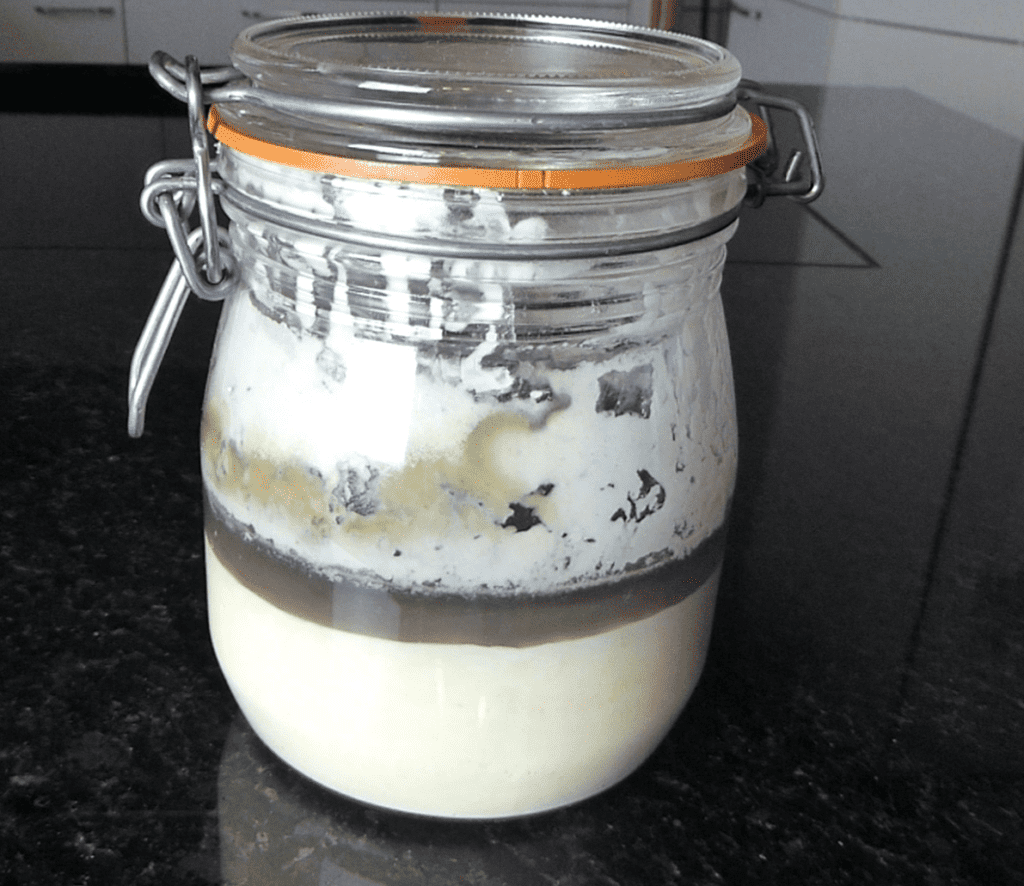
If you are making sourdough bread regularly, store the starter at room temperature and feed the starter at least once in 2 days. Once you take the required quantity for your bread refresh the starter by added flour and water. Room temperature water is good enough.
If you are not baking with sourdough regularly, store the culture in the fridge. This is what I have been doing. This will slow the yeast activity but the yeast is still alive. After a few days a brown liquid layer will form on the top leaving the culture underneath. This is nothing to worry about, just discard the liquid and then you need to also discard about 1/3 of the sourdough starter before feeding it again. Once its ready you can use this starter for your baking.
How should your sourdough bread starter look like and when to feed ?
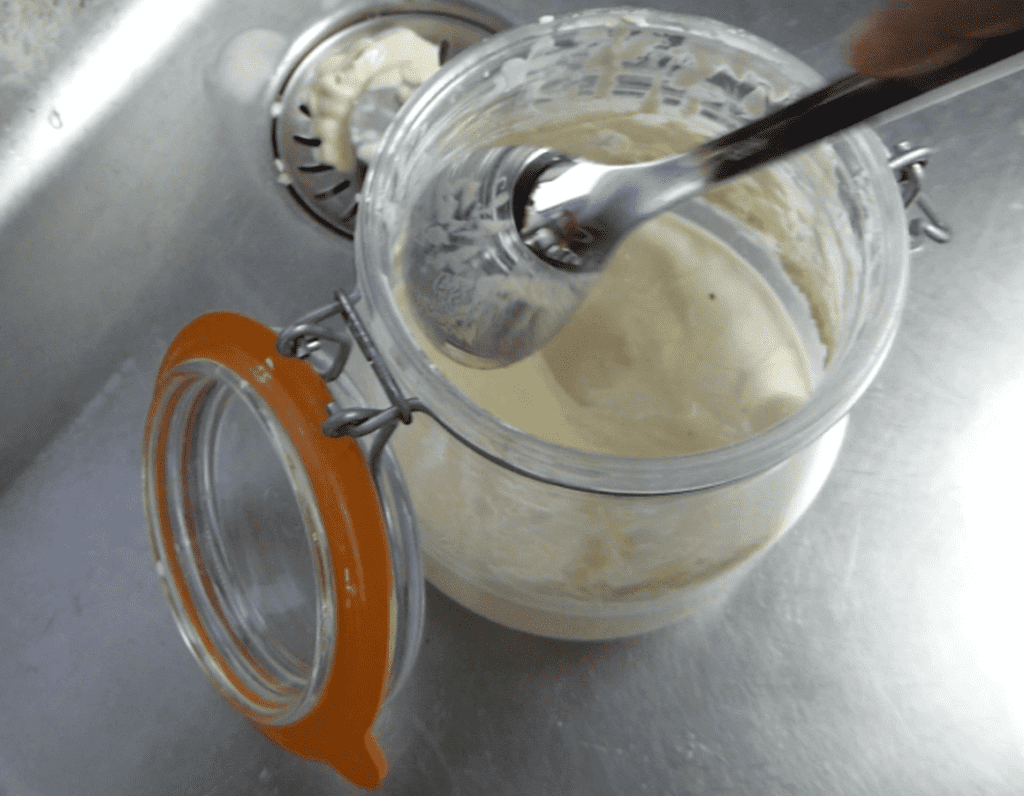
The sourdough starter should be like a thick batter. The best time to feed the starter is when its bubbling and starting to drop again. This is an indication that the yeast has fed on the sugars from the flour and the yeast is now ready for more food. Feed the starter before you store in the fridge.
As a side note I have to confess, I am actually very laid back about refreshing the starter. I only feed the starter whenever I am baking sourdough bread. Sometimes we leave a gap of even 2 months without feeding the starter when we go on holiday or even when we are home and want to take a break from sourdough bread. Yet the starter I have is good it works now for more than a year despite my laid back attitude.
Tips for making sourdough starter and bread
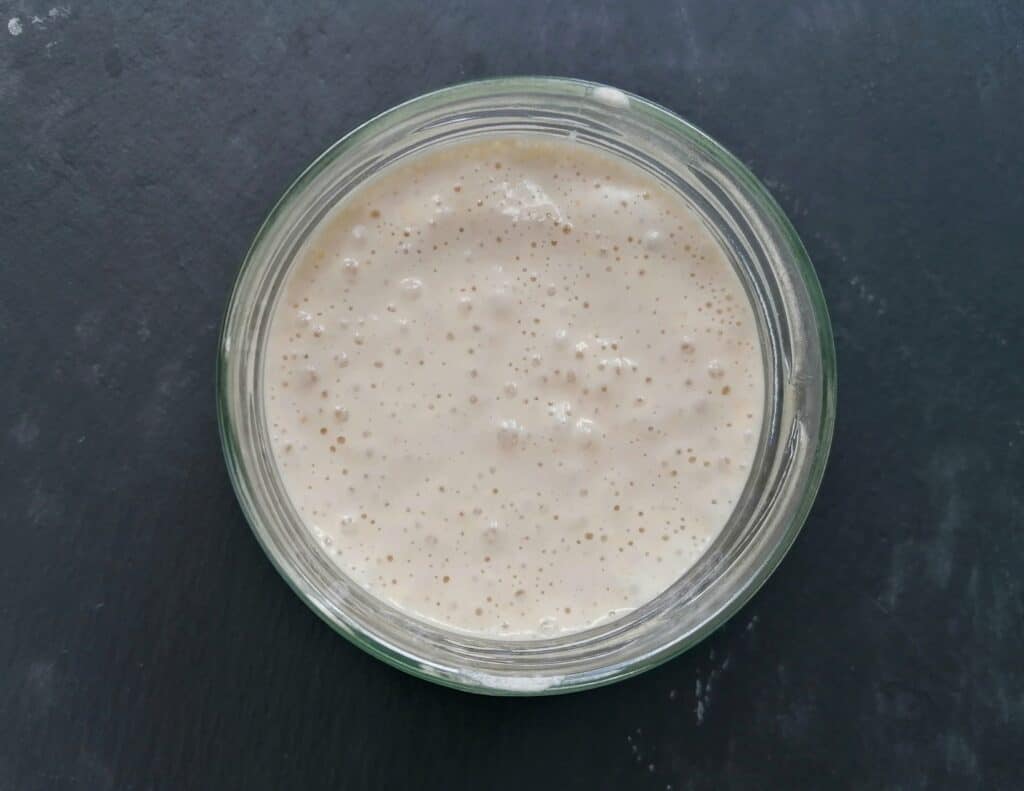
If you are new to baking and sourdough, then its advisable to use all purpose flour for starting your culture. Once you get the hang of it you can switch to whole grains. For a beginner it may be a hit and miss in this journey but persevere and it pays off.
The sourdough starter works best between 22 to 24 deg centigrade room temperature. Remember, that the starter depends a lot on the weather conditions of your home. If you have a warm heated room in the winter then the bread will also rise a lot faster than a cold home with no central heating. Sourdough bread dough needs longer rising time unlike yeast breads so make sure you plan this ahead of time, at least 24 hours in advance.
Also, till you get the hang of shaping and baking the bread optimally, I would advise you to use a bread pan for this process. That way, the bread will not fall apart but will rise and bake evenly. Another reason why I use a loaf tin is because of the low gluten flour I bake with. Spelt and rye are tricky to handle for the second prove and you can have amazing looking breads with the tin.
Below is the recipe for the Sourdough bread I bake regularly with freshly ground spelt flour.
PIN IT FOR LATER
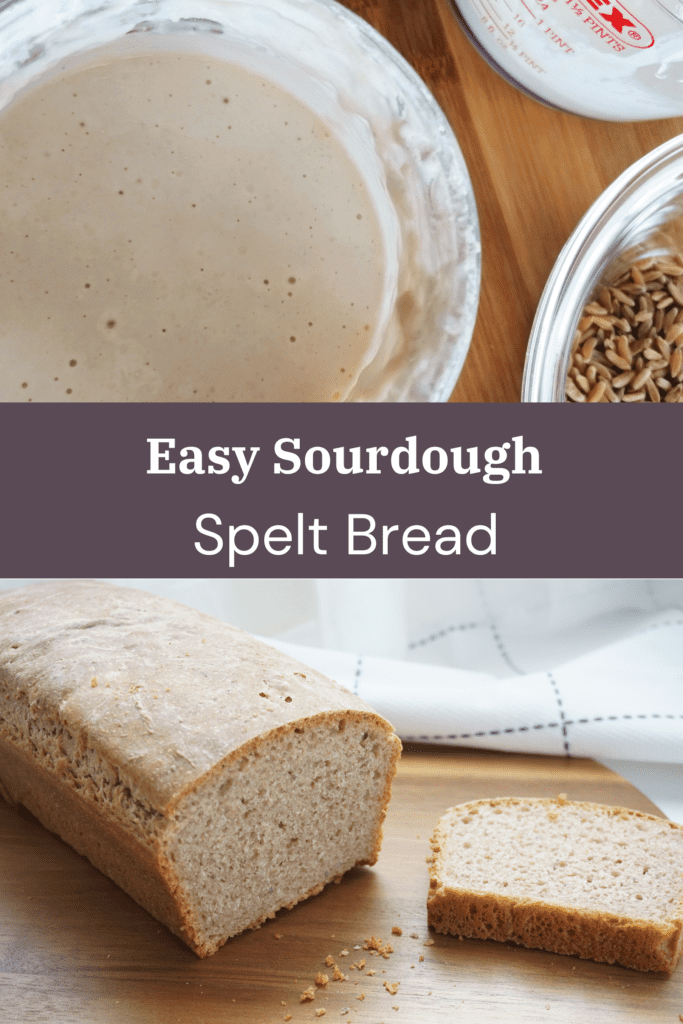
Mix in all the ingredients and knead into a pliable dough. Let the dough rise for 5 hours or until double in size. On a lightly floured surface knock out the air in the dough with the heels of your hands and flatten the dough to a rough rectangle. Fold the two shorter ends in towards the center to get a squarish shape. Shape into the greased pan by rolling the dough tightly. Cover the loafs with a cloth and let it rise for 4-8 hours or doubled in size. Bake in a preheated oven at 220 deg. centigrade for 30 min. Lower the heat to 200 deg centigrade and bake further for 15- 20 min. Cool and slice. If you are using spelt or any other flour with low gluten content, its best to use a loaf pan after shaping the dough. Also if you are beginner to baking its advisable to use a loaf tin for baking your bread. This will give the bread an even shape and rise well.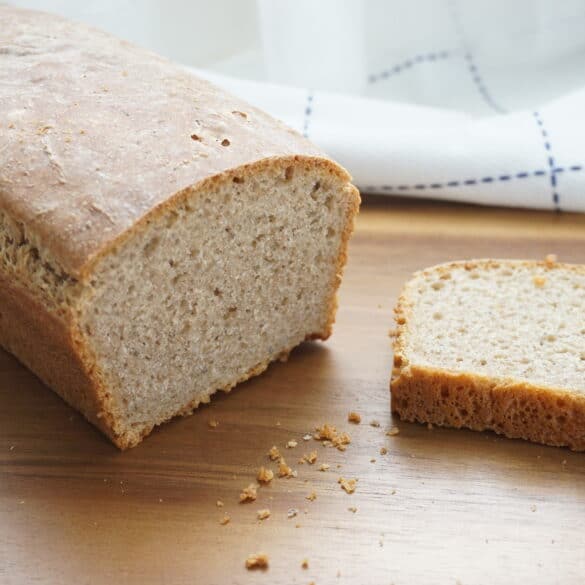
Ingredients
Instructions
Notes

